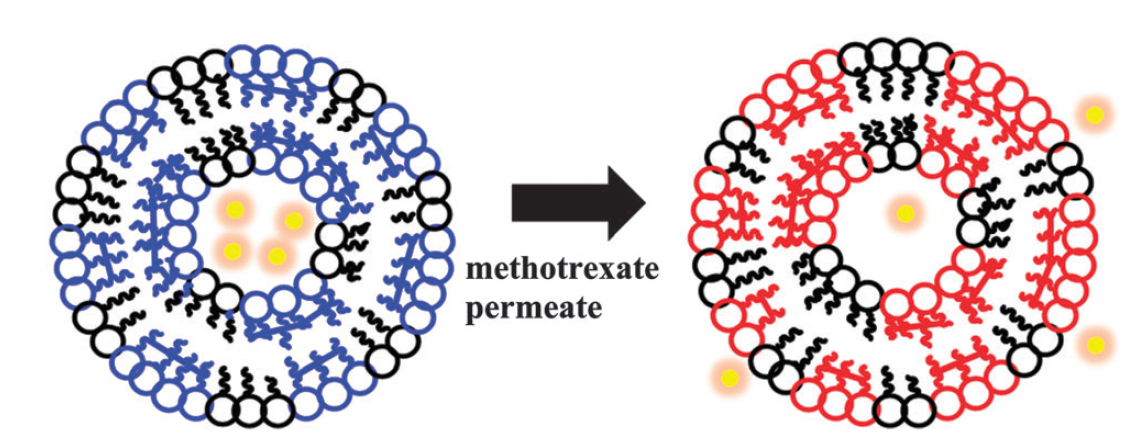|

|
| Type |
Poster Presentation |
| Area |
Polymer Chemistry |
| Room No. |
Exhibition Hall 2+3 |
| Time |
10월 20일 (금요일) 13:00~14:30 |
| Code |
POLY.P-22 |
| Subject |
Permeation-induced chromatic change of polydiacetylene vesicle |
| Authors |
Min Jae Shin, Young Jae Shin1,*, Jae Sup Shin2,*
School of Integrated Oriental Medical Bioscience, Semyung University, Korea
1Physics, Harvard University, United States
2Department of Chemistry, Chungbuk Natioanl University, Korea
|
| Abstract |
|
The noble vesicular system of polydiacetylene showed a red shift by two kinds of detecting systems. One of the systems involves absorption of target materials from outer side of the vesicle, and the other system involves the permeation through the vesicular layers from within the vesicle. The chromatic mixed vesicles of N-(2-aminoethyl)pentacosa-10,12-diynamide were formed with dimethyldioctadecylammonium chloride or tetra(ethylene glycol) monooctadecyl ether by sonication, followed by polymerization by UV irradiation. Methotrexate was used as a target material. The polymerized mixed vesicles showed the blue color, and a red shift was observed indicating the adsorption of methotrexate on the polydiacetylene bilayer. In order to check the chromatic change by the permeation of methotrexate, we separated the vesicle portion, which contained methotrexate inside the vesicle, and checked chromatic change during the permeation of methotrexate through the vesicle. The red shift apparently indicates the disturbance in the bilayer induced by the permeation of methotrexate. The molar ratios in the mixed vesicles which showed the maximum contrast of color were determined. The change color could occur through permeation of a substrate with a high molecular weight, for example gentamicin and neomycin, but it could not occur with a substrate with low molecular weight, for example ethylamine and butylamine. |
|

|
|
| E-mail |
openmj@semyung.ac.kr |
|
 120th General Meeting of the KCS
120th General Meeting of the KCS
 120th General Meeting of the KCS
120th General Meeting of the KCS